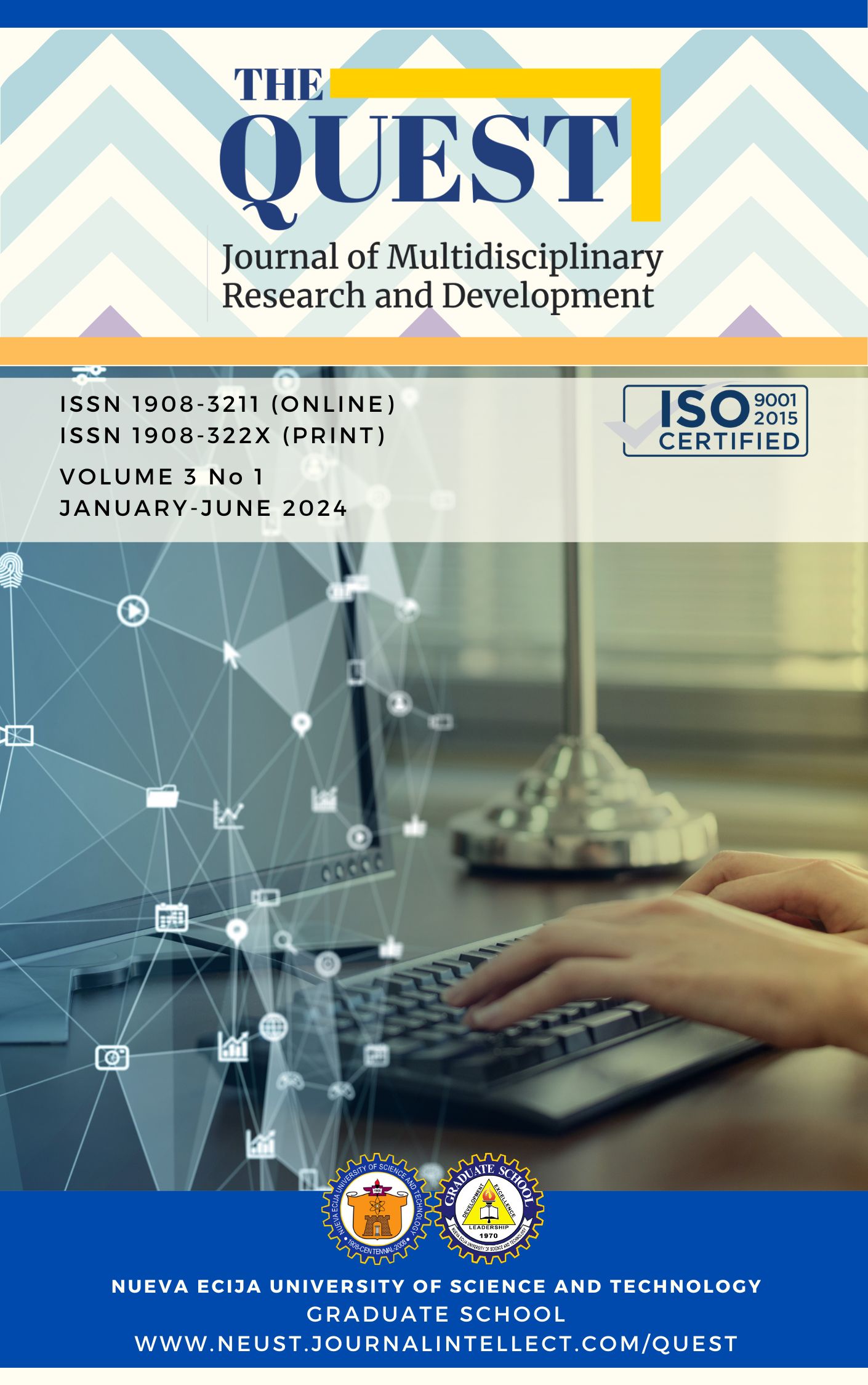AcadTrack: Development and Assessment of Learner’s Academic Performance Tracking System With Decision Support

Published 06/30/2024
Keywords
- Academic Performance,
- Functional Characteristics,
- ISO 25010,
- Software Development Life Cycle,
- Technical Characteristics
How to Cite
Copyright (c) 2024 The QUEST: Journal of Multidisciplinary Research and Development

This work is licensed under a Creative Commons Attribution-NonCommercial 4.0 International License.
Abstract
The study, "AcadTrack: Development and Assessment of Learner’s Academic Performance Tracking System With Decision Support," aimed to digitalize the manual Student Tracking System at the College of Information and Communications Technology, Nueva Ecija University of Science and Technology. It involved development and assessment phases, utilizing the Software Development Life Cycle (SDLC) for creation—encompassing planning, designing, coding, testing, and deployment. IT experts evaluated its technical aspects, while the Guidance Coordinator and Class Advisers examined its functional characteristics and effectiveness, all against ISO 25010 Software Quality Product Standards. The system was found to be suitably functional, efficient, compatible, usable, reliable, secure, maintainable, portable, and effective. The study suggests further integration with university-wide records for comprehensive performance tracking.
References
- Allen, J. D. (2005). Grades as valid measures of academic achievement of classroom learning. The Clearing House: A Journal of Educational Strategies, Issues and Ideas, 78(5), 218-223.
- Amandeep, K. (2018). Performance Efficiency Assessment for Software Systems. Advances in Intelligent Systems and Computing.
- Bertoa, M. F., Troya, J. M., & Vallecillo, A. (2006). Measuring the usability of software components. Journal of Systems and Software, 79(3), 427-439.
- Bhullar (2012) Use of Data Mining in Education Sector. Retrieved from http://www.iaeng.org/publication/WCECS2012/WCECS2012_pp513-516.pdf
- DECISION SUPPORT SYSTEMS (2020). Retrieved from 11. https://www.referenceforbusiness.com/small/Co-Di/Decision-Support-Systems.html
- DepEd (2014) STUDENT TRACKING SYSTEM (STS). Retreived from deped.gov.ph
- Dockery, D. J. (2012). School Dropout Indicators, Trends, and Interventions for School Counselors Donna J. Dockery (Virginia Commonwealth University’, 2018).
- Downey, D. B., & Condron, D. J. (2016). Fifty years since the Coleman Report: Rethinking the relationship between schools and inequality. Sociology of Education, 89(3), 207-220.
- Grybas, D. (2002). U.S. Patent Application No. 10/106,575.
- ISO/IEC 25010 (2020). Retrieved from https://iso25000.com/index.php/en/iso-25000-standards/iso-25010
- Jalan (2018) A Design Methodology For Reliable Software Systems: An Academic Article Summary. Retrieved from 12. https://www.freecodecamp.org/news/a-design-methodology-for-reliable-software-systems-a-summary-394dfd0dcbc2/
- McNelis et.al (2012) Improving Quality and Safety in Graduate Education Using an Electronic Student Tracking System. Retrieved from https://www.sciencedirect.com/science/article/abs/pii/S0883941712000842
- Mirowsky, J. (2017). Education, social status, and health. Routledge.
- Özkaya, M., & Korkmaz, Ö. (2017). Object-Oriented Analysis And Design Of A Student Tracking Information System For Vocational Schools In Turkey.
- Paul, E. A., & Ann, S. R. (2022). Development and Assessment of Online Platform for Crop Production with Decision Support System. The Quest: Journal of Multidisciplinary Research and Development, 1(1).
- Pick, Roger Alan. (2008). Benefits of Decision Support Systems. Handbook on Decision Support Systems 1, 719–730. https://doi.org/10.1007/978-3-540-48713-5_32
- Student retention: 8 reasons people drop out of higher education (2020). Retrieved from https://www.uplanner.com/en/blog/8-causas-de-desercion-estudiantil-en-la-educacion-superior/
- Xu, J., Moon, K. H., & Van Der Schaar, M. (2017). A machine learning approach for tracking and predicting student performance in degree programs. IEEE Journal of Selected Topics in Signal Processing, 11(5), 742-753.
